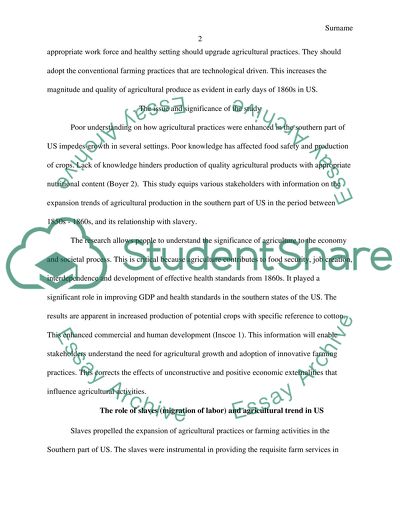Cite this document
(“The trend of agricultural expansion in the US South and its relation Research Paper”, n.d.)
The trend of agricultural expansion in the US South and its relation Research Paper. Retrieved from https://studentshare.org/miscellaneous/1609910-the-trend-of-agricultural-expansion-in-the-us-south-and-its-relation-to-the-slave-movement-from-1850-to-1860
The trend of agricultural expansion in the US South and its relation Research Paper. Retrieved from https://studentshare.org/miscellaneous/1609910-the-trend-of-agricultural-expansion-in-the-us-south-and-its-relation-to-the-slave-movement-from-1850-to-1860
(The Trend of Agricultural Expansion in the US South and Its Relation Research Paper)
The Trend of Agricultural Expansion in the US South and Its Relation Research Paper. https://studentshare.org/miscellaneous/1609910-the-trend-of-agricultural-expansion-in-the-us-south-and-its-relation-to-the-slave-movement-from-1850-to-1860.
The Trend of Agricultural Expansion in the US South and Its Relation Research Paper. https://studentshare.org/miscellaneous/1609910-the-trend-of-agricultural-expansion-in-the-us-south-and-its-relation-to-the-slave-movement-from-1850-to-1860.
“The Trend of Agricultural Expansion in the US South and Its Relation Research Paper”, n.d. https://studentshare.org/miscellaneous/1609910-the-trend-of-agricultural-expansion-in-the-us-south-and-its-relation-to-the-slave-movement-from-1850-to-1860.


